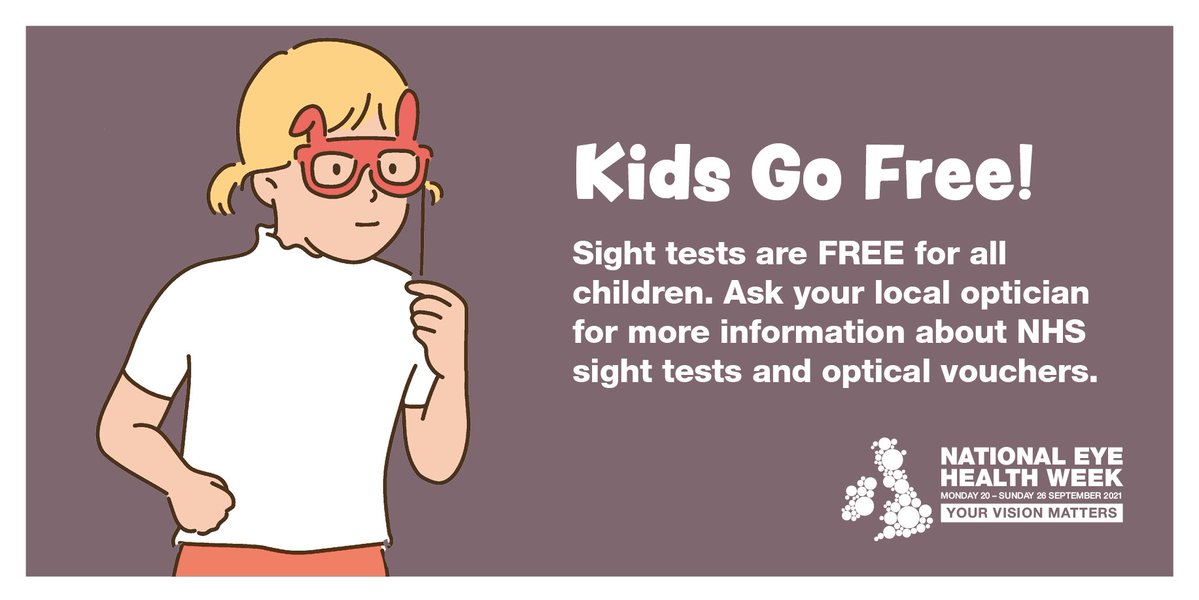It's National Eye Health Week (20th-26th September), so a good time to talk all things optical! Did you know that 1.6 million school–aged children in England could be living with an undiagnosed vision problem that impacts on their educational and social development, according to new figures released by National Eye Health Week and Boots Opticians? It’s especially important to look after children’s eyes, as the eye is still developing throughout early childhood. Any problems need to be treated early otherwise they can make a lasting difference. However, research shows that around 20% of school-aged children have an undiagnosed vision problem. It’s never too early to have a sight test - visiting an optician will mean you can spot and manage vision problems that may affect your child's development.
What to look out for
The only way to know about an eye condition is to take your child for a sight test as some eye conditions do not display any signs or symptoms. Some of the signs which may show there is a problem with a child’s sight include:
- An eye appearing to drift inwards or outwards
- Difficulty concentrating
- Behavioural problems
- Headaches
- Sitting too close to the television
- Blinking
- Frequent eye rubbing
This could mean your child needs glasses or that they have an eye that is healthy but does not see as well, otherwise known as a ‘lazy eye’. The condition can run in the family, so if a relative has either an eye turn (squint) or suffers from reduced vision in one or both eyes (amblyopia), it’s a good idea to take any related children for a sight test.
What to do
Some children have their vision screened at school – this is usually a basic test, designed to pick up children who have reduced vision in one or both eyes. If a problem is suspected, children will usually be referred to an optician for a full sight test. Parents may assume that their child has been screened at school but this does not happen in all areas of the country.
What is an eye/sight test?
Sight tests can pick up many other conditions including colour vision defects, problems with the development of 3D vision and any need for glasses.
Although the UK National Screening Committee recommends screening at age four to five years, there are many opticians who will see children much younger than this for a sight test. It is recommended that children have a sight test around the age of three, so that conditions are picked up and treated early. After the first test it is a good idea to return every two years, or as recommended by your optician.
Eye / Sight tests are free!
Children under the age of 16 are entitled to NHS-funded sight tests (covering the cost of a sight test), plus an optical voucher, which entitles you to help towards the cost of glasses or contact lenses if required.

What can I do if I my child doesn’t want to wear glasses?
If your child is reluctant to wear glasses, it’s important to remember that some children need some kind of visual correction in order for their vision to develop normally and to achieve their full potential. The good news is glasses are now deemed as ‘trendy’! There are a much wider range of attractive frames to choose from and less stigma attached to wearing glasses. Some children may even be disappointed when told they don’t need to wear glasses!
Many children are also suitable for contact lenses; this is particularly helpful for children who take part in regular sports activities and can be successfully worn from an earlier age than you might expect. Ask your optician whether contact lenses would be suitable for your child.
What else can I do to look after my child’s eyes?
- Get them outdoors – regular play and exercise can help with eye health. Studies show two hours of outdoor activity a day is ideal for healthy eyes
- Make sure they eat healthily and drink enough fluids
- Protect their eyes from the sun – never let them look directly into the sun and make sure they always wear good-quality sunglasses with the ‘CE’ quality mark and the British Standard BS EN 1836:2005
- Some evidence suggests that tasks involving looking at something close-up e.g. using mobile devices can increase eye strain for those who do this for long periods of time
Source: aop.org.uk, visionmatters.org.uk







